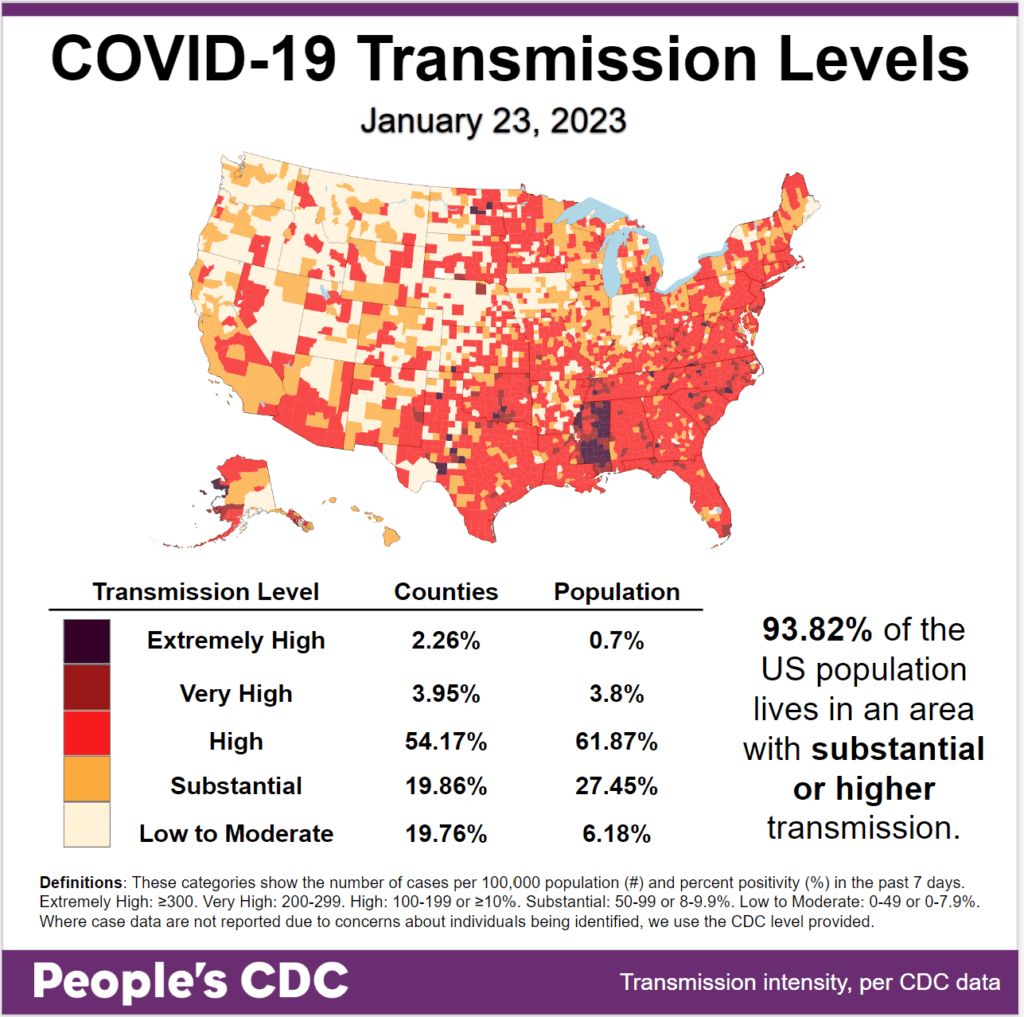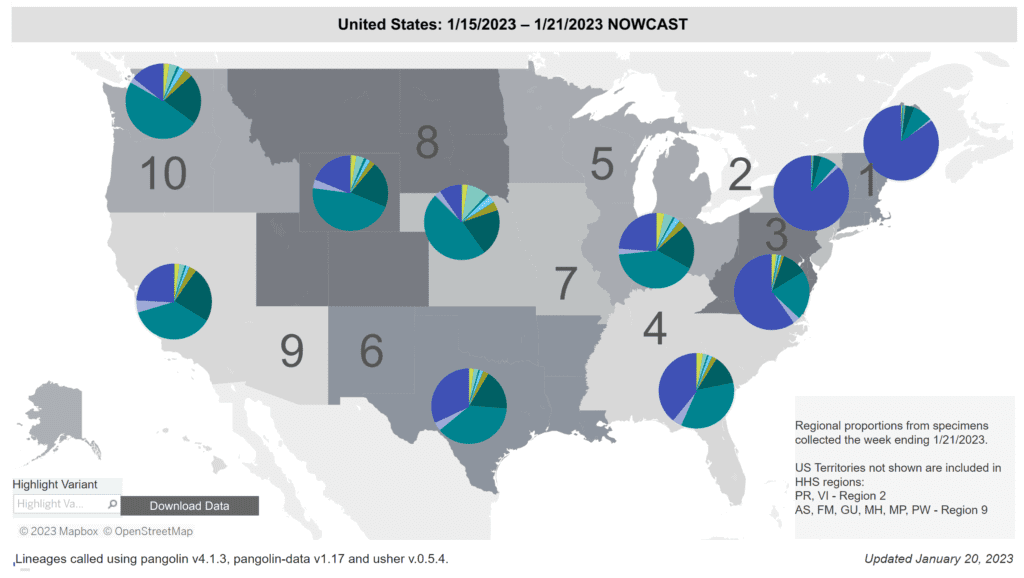The Weather: Transmission levels remain high, with 93.82 percent of the population living in areas with substantial or higher transmission. Rates are particularly high in the South and the East Coast, with lower levels in the West.

On Variants: This week the new variant XBB 1.5 (Kraken) has surpassed BQ1/1.1 as the most common variant (49.1%). It continues to dominate in the Northeast and is taking a larger share as it moves west across the U.S.

Regional differences in dominant variants continue. Kraken (dark purple) is dominant in the Northeast and Southeast, and is gaining rapidly in other regions currently dominated by BQ1/1.1 (teal green).

Is it worth getting another booster with these new variants? A preprint showed that a bivalent booster enhanced neutralizing antibodies that new variants might otherwise escape with only 3 mRNA vaccine doses.
Wastewater Monitoring: National wastewater levels are showing a decline, though they remain at a high level that has continued through the past 6 months.

Wastewater levels continue to be high but are declining in the Northeast, and wastewater in all other regions appear to be plateauing.

Hospitalizations: Hospitalizations are declining but remain high with a 7 day average of nearly 5000 per week. Many are people over 70 (dark purple).

Deaths: The week of January 18, at least 3,953 people died of COVID nationally. This is a stubbornly high death toll for a pandemic the government has declared “over.”
Some pundits have seized on the politically convenient fiction that we are overestimating the number of deaths due to COVID. In fact, we are mostly undercounting deaths.
A pooled analysis of 12 studies found infection with COVID at any point during pregnancy increases the risk of death by nearly eight times compared to those who remain uninfected.
Long COVID: A recent study found increased risks up to one year post COVID infection of dysregulated cholesterol levels in the bloodstream, contributing to coronary artery disease and increased risk of heart attack.
A systematic review and meta-analysis of 101 studies (only 16 of which were considered high quality) found a wide spectrum of long-term cardiac symptoms following COVID infection. More large and rigorous studies are needed to better understand the implications of these findings.
If you are currently COVID positive, or have had COVID recently, it’s important to allow your brain and body to rest as much as possible.
Vaccines: Bivalent boosters still provide some immunity, and that imprinting will not make COVID more severe than it would be in someone with no previous exposure. In some people, the immune system can adapt, raising the possibility of improving immune responses.
CDC study found racial and ethnic differences in COVID vaccination coverage among children and suggests need for providers and trusted messengers to provide culturally relevant information to increase overall coverage and address disparities.
Another CDC study evaluated reasons for not receiving bivalent boosters. The most common were that people didn’t know about it or didn’t know they were eligible, highlighting the govt’s failure to properly distribute one of the only remaining tools left to fight the pandemic.
Forecast: Potential new treatment: VV116 is an oral antiviral agent with potent activity against COVID and a study found it to be comparable to Paxlovid with fewer safety concerns in adults with mild-to-moderate COVID who were at risk for progression.
COVID infection may affect the fetal brain during early gestation and highlight the need for further study of its impact on subsequent neurological development.
Take Action: Miss our one year anniversary webinar last week? Learn more about our work and accomplishments over the past year and how to get involved.
If you’re a university professor with the ability to do so, consider having your students review Dr. Mike Hoerger’s (@michael_hoerger) student-focused pandemic mitigation primer.
This week, it was reported that companies creating COVID vaccines pressured Twitter to suppress activist-led social media campaigns aimed at demanding for the ability to create more affordable, generic versions of existing vaccines.
Notes: 1) The numbers in this report were current as of 1/20. The CDC updates data frequently as it receives refreshed information. Today’s numbers may be slightly different from the data here. 2) Check out the links throughout & see our website for more! https://bej.gbh.mybluehost.me.